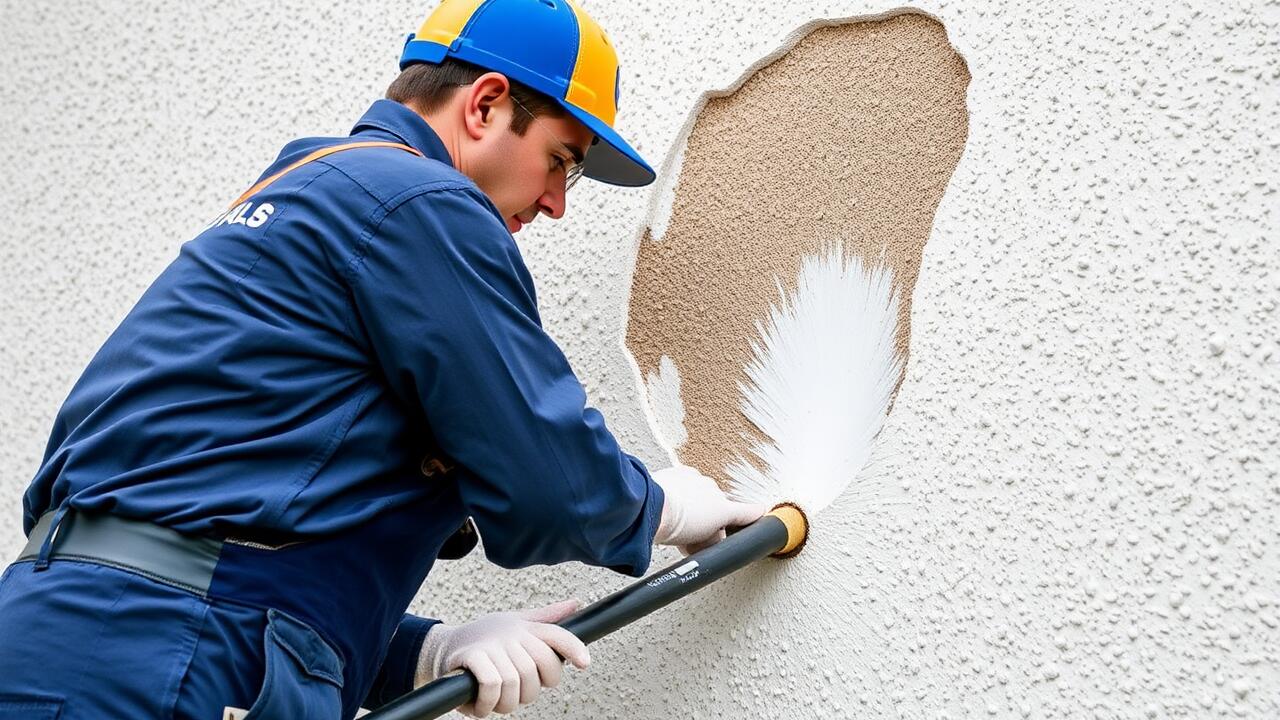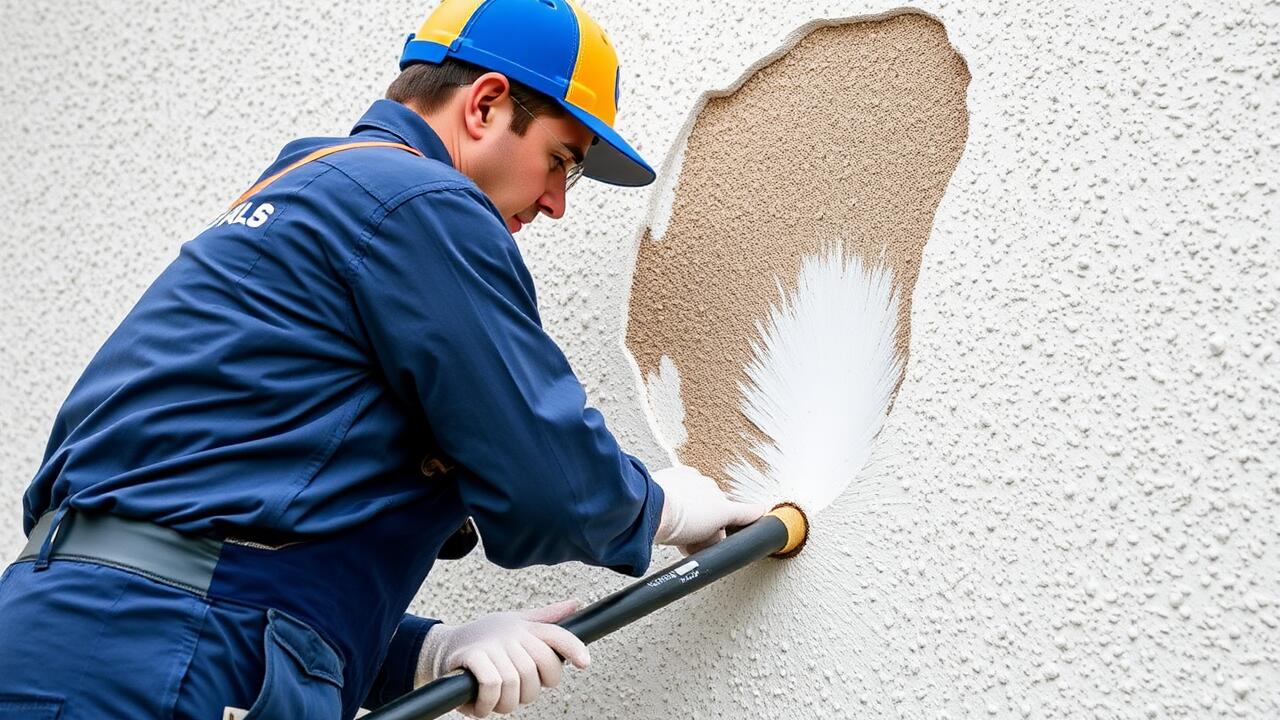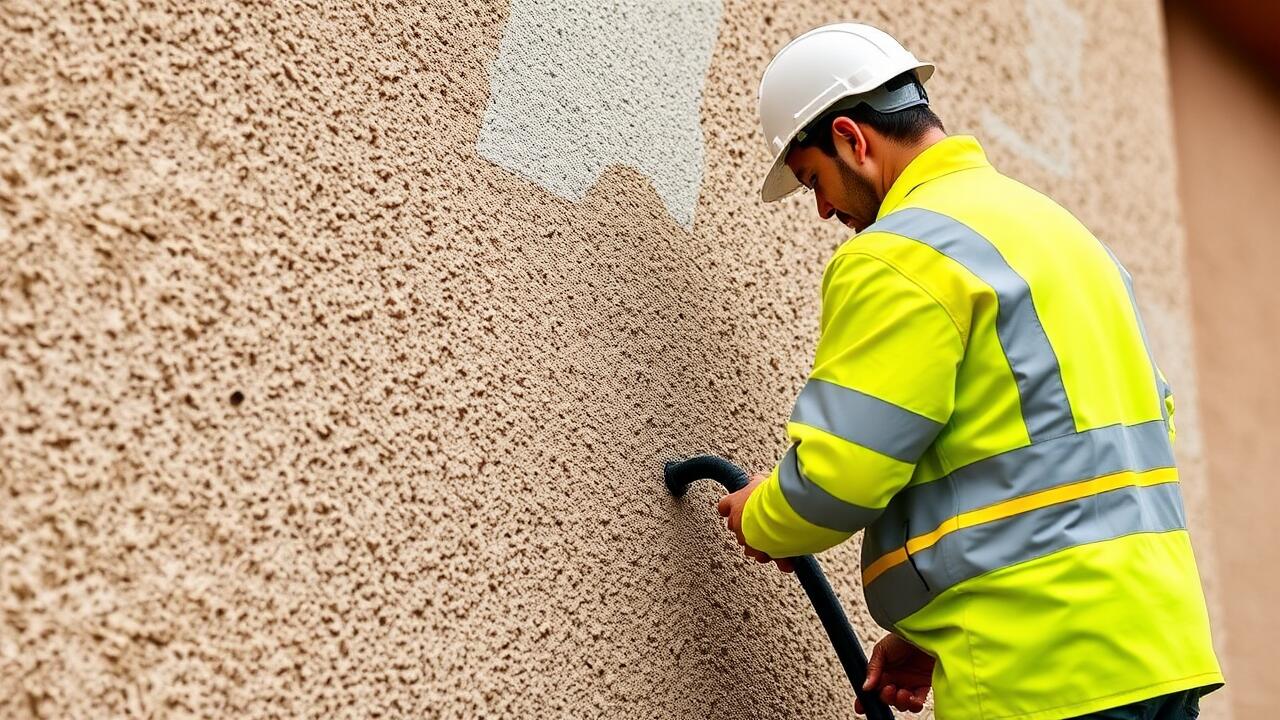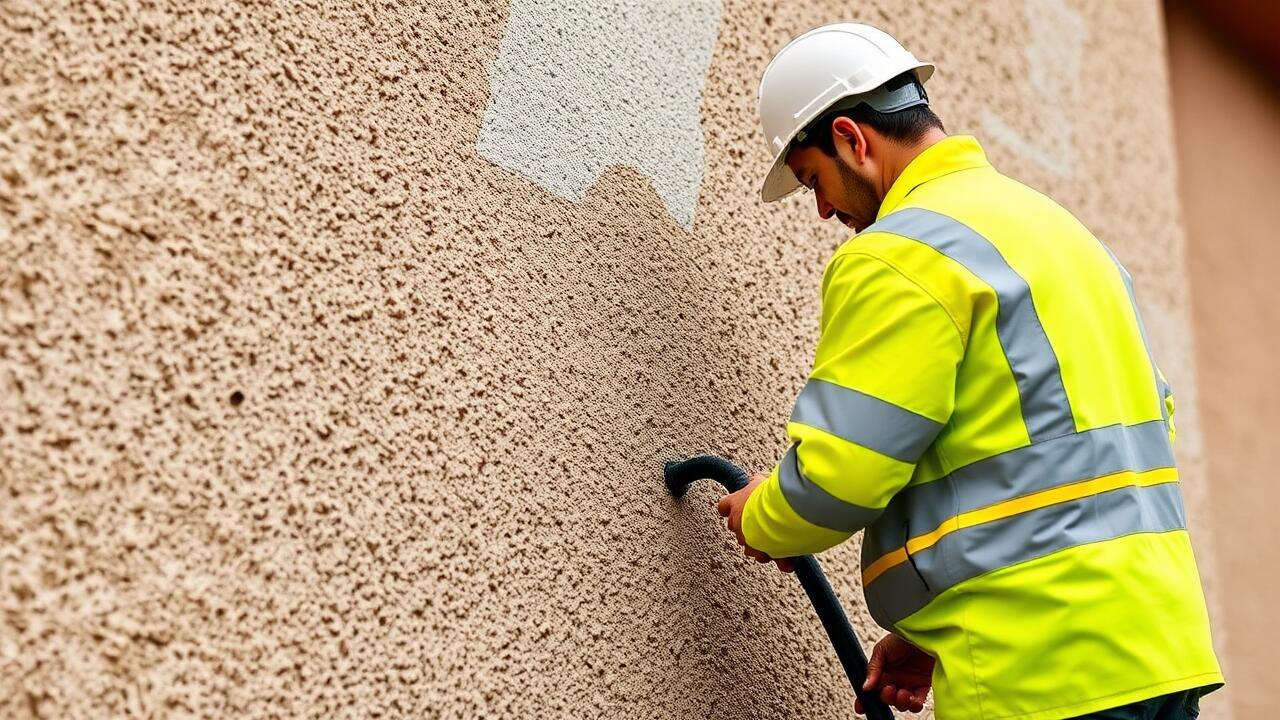
Handling Hazardous Materials
When engaging in stucco removal, it is crucial to handle hazardous materials with the utmost care. Many older stucco installations may contain asbestos or lead-based paint, both of which pose significant health risks if disturbed improperly. Before beginning the process, it is advisable to conduct a thorough inspection of the materials. If there's any uncertainty regarding the presence of harmful substances, consulting a professional for testing is essential. Homeowners searching for assistance can look up "Stucco Removal near me" to find experienced specialists familiar with safe removal techniques.
Proper personal protective equipment (PPE) is necessary to mitigate exposure to dust and particles during stucco removal. This includes wearing respirators, gloves, and protective eyewear to safeguard against inhalation or skin contact with potentially hazardous materials. The work area should be contained and well-ventilated to limit contamination. Ensuring that all hazardous waste is appropriately disposed of following local regulations is also critical. Taking these precautionary steps allows for a safer and more efficient stucco removal experience while protecting the health of individuals involved in the project.
Identifying Asbestos and Lead Paint
Identifying asbestos and lead paint before beginning stucco removal is essential for ensuring safety. Asbestos often appears in older buildings, particularly in products manufactured before the 1980s. If you suspect your home may contain asbestos, it’s critical to look for signs like deteriorating or damaged stucco. Additionally, materials containing lead paint were commonly used in homes built before 1978. Conducting a thorough inspection is necessary to determine whether these hazardous substances are present.
Homeowners should consider hiring a certified professional for testing and assessment. They can provide accurate results and guidance on how to manage any identified risks. Searching for "Stucco Removal near me" can lead to experienced contractors familiar with handling hazardous materials. Implementing appropriate safety measures during the removal process minimizes health risks and ensures compliance with local safety regulations.
Structural Considerations
When planning for stucco removal, it is crucial to assess the structural integrity of the underlying surfaces. Old stucco may conceal damage to the supporting walls or framing. Water intrusion or pest infestations might not be visible until the stucco is removed. Conducting a thorough inspection will help identify any potential issues that could complicate the removal process or necessitate additional repairs.
Seeking professional assistance can provide valuable insights during the evaluation. Experienced contractors can identify signs of wear or damage and recommend the best approach for stucco removal near me. Proper assessment ensures that any underlying problems are addressed before the project progresses, ultimately safeguarding the structural integrity of the home.
Evaluating the Integrity of Underlying Surfaces
Evaluating the integrity of underlying surfaces is crucial for understanding the overall condition of the structure before beginning stucco removal. Deterioration beneath the stucco can lead to significant structural issues. Inspect for signs of water damage, mold, or rot which can compromise walls or sheathing. Any signs of decay must be addressed prior to removing the stucco to ensure a safe and lasting renovation.
Whether you are seeking professional help or planning a DIY project, searching for "Stucco Removal near me" can provide you with local experts who are knowledgeable about the underlying materials. They can perform a thorough assessment to identify any damage that may not be visible at first glance. This evaluation not only helps in making informed decisions but also saves time and expenses in the long run, ensuring a successful stucco removal process.
Protecting Surrounding Areas
When engaging in stucco removal, it is crucial to protect surrounding areas to prevent damage and maintain the integrity of the property. Use tarps or plastic sheeting to cover landscaping, windows, and outdoor furniture. This creates a barrier that catches debris and dust, minimizing the risk of any lasting effects on other surfaces. Additionally, consider placing drop cloths on the ground to protect the flooring from falling material and tools.
Dust and debris can be significant during stucco removal. Installing proper containment measures helps reduce dust dispersion and maintains the cleanliness of the surrounding environment. Be cautious with any tools utilized in the stucco removal process, as they can cause scratches or dents. If you're searching for assistance, consider looking for “stucco removal near me” to find professionals who prioritize protective measures for your property.
Measures to Prevent Damage to Property
When planning for stucco removal, protecting surrounding areas is essential to avoid damage during the process. Begin by securing the work zone with plastic sheeting or tarps to catch debris and minimize the risk of paint splatter or dust settling on nearby surfaces. This barrier not only protects landscaping but also prevents materials from reaching windows and doors, which can be costly to repair.
Consider relocating outdoor furniture and décor to a safe distance from the work site. Using plywood or other sturdy materials to shield nearby surfaces offers additional protection. As homeowners may often search for solutions like “stucco removal near me,” ensuring the surrounding property remains undamaged contributes to an overall positive experience. Proper preparation fosters a smoother removal process and helps maintain the integrity of adjacent areas.
FAQS
What safety precautions should I take when removing stucco?
When removing stucco, you should wear appropriate personal protective equipment (PPE) such as gloves, goggles, and a mask. Additionally, ensure proper ventilation and be aware of hazardous materials like asbestos or lead paint.
How can I identify if my stucco contains asbestos or lead paint?
To identify asbestos or lead paint, you should have the materials tested by a certified professional. If your home was built before 1978, it's especially important to check for lead paint, as it was commonly used prior to that year.
What should I do if I find asbestos or lead paint in my stucco?
If you discover asbestos or lead paint, do not attempt to remove it yourself. Contact a licensed abatement contractor who can safely handle and dispose of hazardous materials according to local regulations.
How can I evaluate the integrity of the underlying surfaces before removing stucco?
Before removing stucco, inspect the underlying surfaces for signs of damage, rot, or mold. Look for water stains, soft spots, or any structural issues that may need to be addressed before or during the removal process.
What measures can I take to protect surrounding areas during stucco removal?
To protect surrounding areas, you should cover plants, furniture, and other property with tarp or plastic sheeting. Additionally, use drop cloths to catch debris and dust, and consider using barriers to restrict access to the work area.



